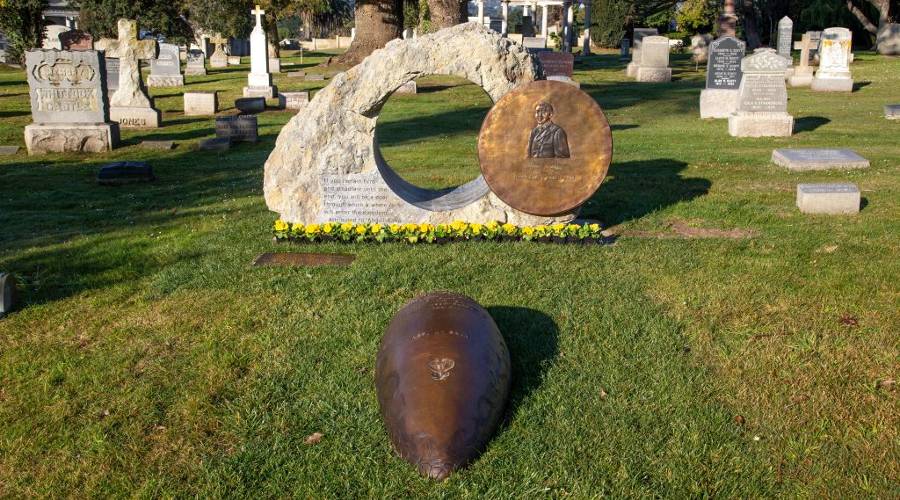Art transcends mere aesthetic appeal; it serves as a poignant medium through which deeper narratives are conveyed and historic legacies honored. One such exemplification lies in the ode to the first African American Bahá’í, whose life and contributions resonate profoundly with pivotal tenets of the Bahá’í Faith. Artist Masud Olufani’s memorialization of this significant figure underscores the dual role of art: to commemorate history while engendering dialogue surrounding race and spiritual unity. This article delves into the multifaceted Bahá’í teachings that underpin this tribute, illuminating the interconnectedness of faith, identity, and creativity.
The Significance of the First African American Bahá’í
The first African American to embrace the Bahá’í Faith was Lewis D. Gregory. His conversion in the early 20th century marked a seminal moment, not solely for personal spiritual awakening but also for the broader context of race relations within America. Gregory’s dedication to the principles of equality and justice aligns seamlessly with the Bahá’í emphasis on universal harmony. This historical framework sets the stage for understanding the modern artistic tribute created by Olufani, who channels Gregory’s legacy into a contemporary artistic dialogue.
Masud Olufani: The Artist as a Cultural Historian
Masud Olufani is not merely an artist; he embodies the role of a cultural historian, meticulously weaving narratives that resonate with themes of identity, heritage, and communal memory. His artistic endeavors reflect a commitment to illuminating marginalized histories, thereby creating spaces where dialogue can flourish. Olufani’s work often incorporates intricate symbolism, inviting viewers to engage in a reflective journey while exploring the profound ramifications of race and spirituality in American society.
The Artistic Tribute: A Multi-Dimensional Experience
Olufani’s tribute to the first African American Bahá’í is not limited to a singular medium; it encompasses a variety of artistic formats that collectively enrich the viewer’s understanding. From sculptures to immersive installations, his work breathes life into the past while simultaneously addressing contemporary issues. The use of materials, techniques, and visual narratives becomes a powerful conduit for storytelling, allowing the audience to connect with both the artist’s vision and the historical significance of the figure being honored.
Exploring Themes of Unity and Equality
At the core of Bahá’í teachings lies the principle of unity in diversity. Olufani’s tribute resonates with this doctrine, inviting contemplation on how art can foster an understanding of shared humanity amidst diverse backgrounds. Through meticulous craftsmanship, the memorial serves as a tangible manifestation of the belief that all individuals, regardless of race or origin, contribute to the collective tapestry of existence. This artistic exploration instigates critical conversations about systemic inequality and the urgent need for solidarity within the context of spiritual and societal advancement.
The Role of Community in the Bahá’í Faith
The Bahá’í Faith emphasizes the importance of community in the spiritual journey. Olufani’s work exemplifies this principle by engaging local communities in the artistic process. By involving diverse voices, the artist not only honors Gregory’s legacy but also ensures that the narrative reflects a multiplicity of perspectives. This collaborative approach reinforces the idea that art is a communal endeavor and encourages active participation, thereby transforming the experience into a shared pilgrimage of remembrance and reflection.
Art as a Catalyst for Social Change
Art possesses the inherent power to catalyze social change, serving as a vehicle for advocacy and awareness. Olufani’s tribute elevates this potential, urging viewers to confront uncomfortable truths while simultaneously offering pathways to healing. The poignant imagery and evocative forms challenge preconceived notions and provoke thought, inviting audiences to engage with the larger issues of racial inequities and social justice that continue to permeate contemporary society.
Interpreting the Aesthetics of the Tribute
The aesthetic choices made by Olufani are integral to the narrative being conveyed. The selection of colors, shapes, and materials often carries symbolic weight, enhancing the emotional resonance of the artwork. Each visual element can be interpreted as a reflection of the struggles and triumphs inherent in the African American experience within the Bahá’í community. This layered complexity facilitates a deeper engagement with the artwork, inviting viewers to unravel the meanings embedded within the visual language.
Educational and Reflective Opportunities
The tribute extends beyond the visual realm, offering educational opportunities for both Bahá’ís and non-Bahá’ís alike. Workshops, discussions, and guided reflections related to the themes embodied in Olufani’s work can deepen understanding of the Bahá’í teachings concerning race, identity, and artistic expression. This educational engagement not only amplifies the message of unity but also empowers individuals to think critically about their own roles within the broader narrative of societal equity.
Conclusion: A Living Testament to Legacy
Masud Olufani’s tribute to the first African American Bahá’í stands as a living testament to the indelible impact of art in honoring history and fostering community dialogue. By embracing the teachings of unity, equality, and collective remembrance, this artistic endeavor transcends mere representation, inviting ongoing reflection and action. As society continues to grapple with issues of race and identity, such tributes remind us of the profound interconnectedness that exists in the tapestry of human experience, urging us to cultivate an environment where every voice is acknowledged and celebrated.
